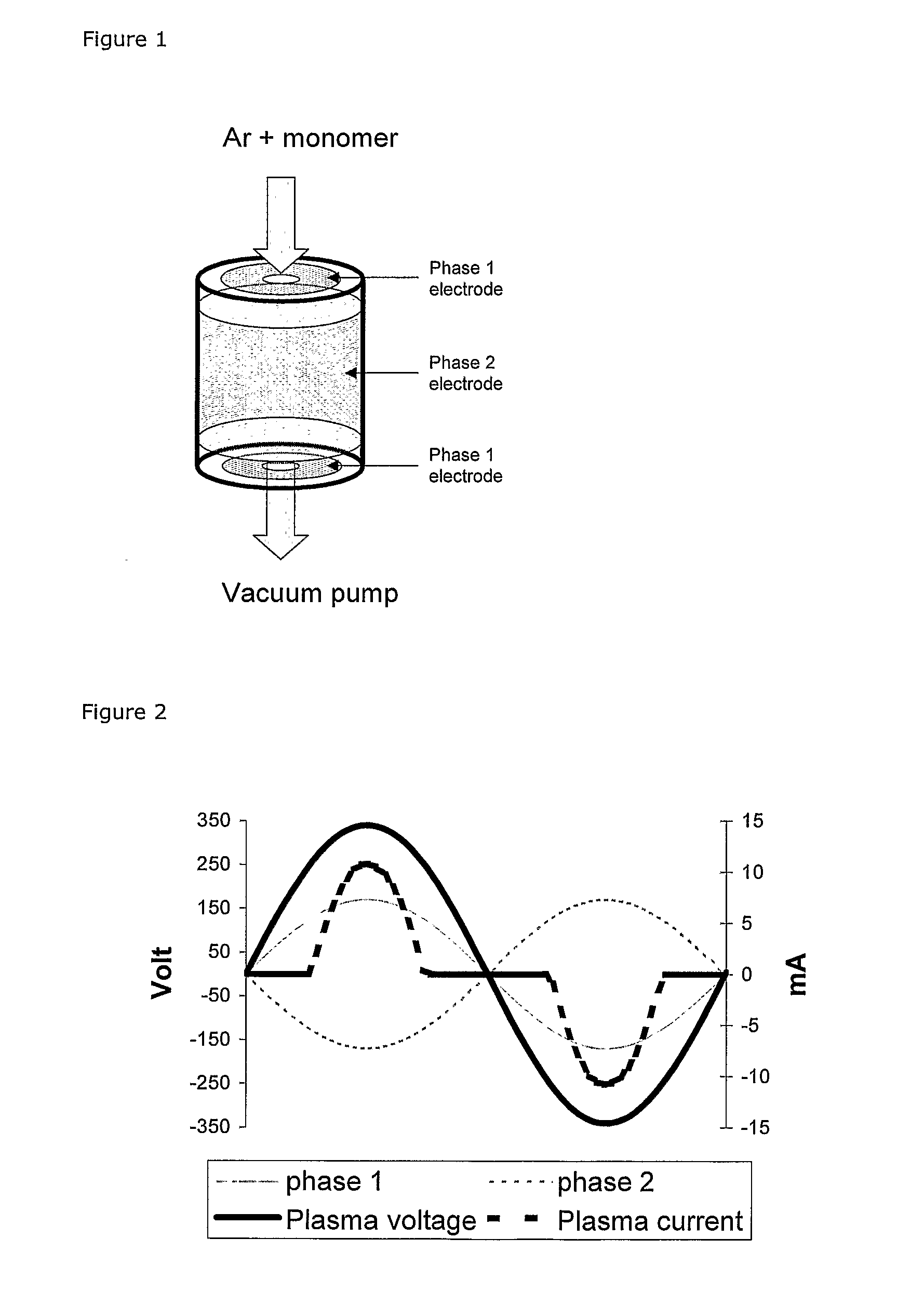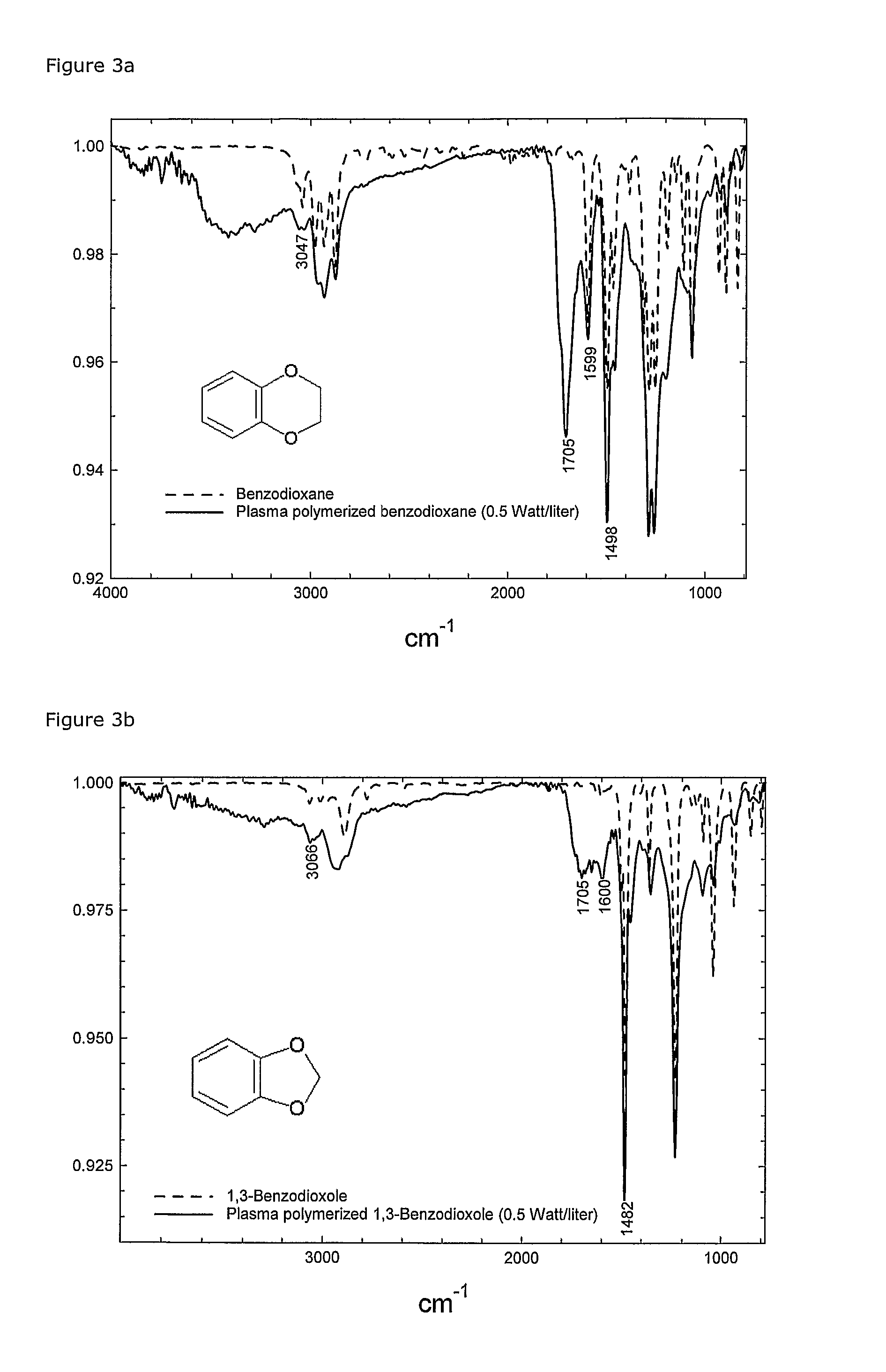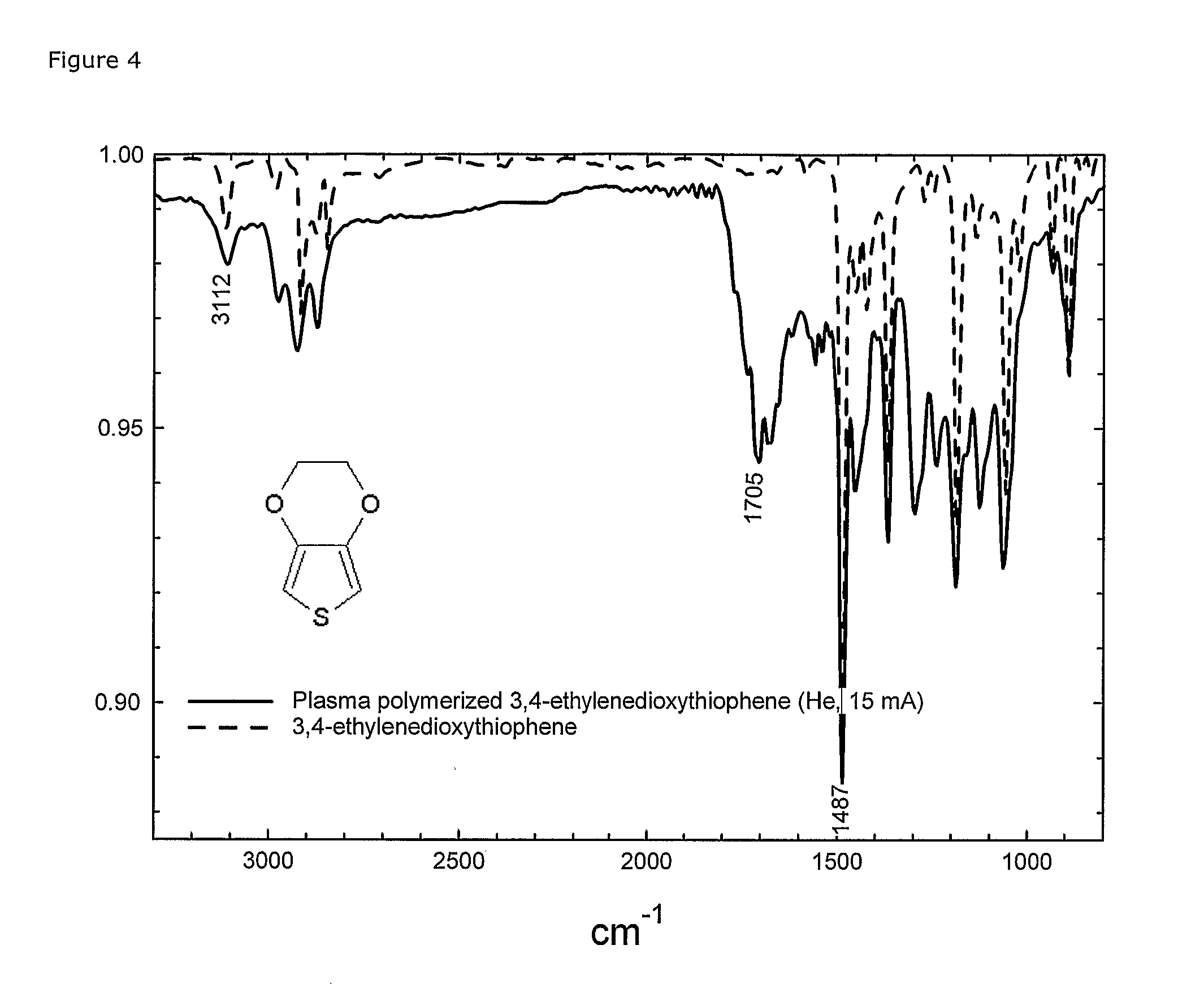Plasma-Polymerisation Of Polycylic Compounds
a technology of polycylic compounds and plasma, which is applied in the field of plasma-polymerisation of polycylic compounds, can solve the problems of difficult to solve conjugated polymer systems, limited choice of conjugated polymer systems for given applications, and limited application range,
- Summary
- Abstract
- Description
- Claims
- Application Information
AI Technical Summary
Benefits of technology
Problems solved by technology
Method used
Image
Examples
example 1
lymerisation of 1,3-benzodioxole and 1,4-benzodioxane
[0144] 1,4-Benzodioxane and 1,3-benzodioxole were plasma polymerised in the described low-power plasma system.
[0145] An argon flow of 5 sccm was used in all experiments. The plasma power was selected between 0.5 and 0.85 W / L and the partial pressure of monomer was 3.7 Pa for 1,4-benzodioxan and 4.2 Pa for 1,3-benzodioxole (without plasma).
[0146] For both monomers ΔPplasma were negative (−1 Pa and −1.6 Pa respectively) regardless of the plasma power.
[0147]FIGS. 3a and 3b show FTIR spectra of the monomers and the plasma polymerised films.
[0148] In both cases, a preservation of the benzene ring (C═C bonds at ˜1490 cm−1 and 1600 cm−1 and ═C—H bonds ˜3045-3065 cm−1) and appearance of carbonyl groups (C═O ˜1705 cm−1) was observed. The carbonyl group can only have origin in the oxygen in the dioxane / dioxole rings and must be one of the resulting products of the polymerisation mechanism.
[0149] The negative ΔPplasma indicates that the...
example 2
lymerisation of 3,4-ethylenedioxythiophene Followed by Oxidative Polymerisation of poly-(3,4-ethylenedioxythiophene)
[0151] 3,4-ethylenedioxythiophene (EDT) was plasma polymerised in the described low-power plasma system on polyethylene and PET foils as well as on glass slides. A large range of parameter settings has been tried (results not included). Under mild plasma conditions (e.g. power less than 0.5 W / L, He as preferred carrier-gas and total pressure 25 Pa) the plasma polymerised film (FTIR spectra, FIG. 4) showed significant signs that the thiophene ring structure was preserved, whereas the dioxane-ring was used for the polymerisation, leaving among others carbonyl groups as product.
[0152] The peak at 1705 shows the formed carbonyl group. The C═C bond in the thiophene-ring was seen both in the monomer and the plasma polymerised film at 1487 cm−1. Of really great importance is the —C—H peak at 3112 cm−1 showing that the α-H on the thiophene ring was preserved in the film. The ...
example 3
lymerisation of 3,4-ethylenedioxythiophene as a Route to Micro-Patterning of Conducting poly-(3,4-ethylenedioxythiophene) Films by Lift-Off Technique
[0155] A silicium wafer was coated with photo resist and patterned by ordinary lithographic technique (FIG. 5), cf. R. Glang, Generation of patterns in thin films, in: Handbook of thin-film Technology, McGraw-Hill, New York, 1970, pp 7-10.
[0156] The wafer was then plasma coated with EDT in an equivalent way as described in Example 2, but with argon as carrier gas (argon flow 5 sccm, power 0.5 W / L, pressure 9.5 Pa, polymerisation time 90 sec.). Due to the harsh chemical conditions under the lift-off procedure, it was an advantage to pre-treat the wafer with H2 plasma (according to patent EP 01931463.2)
[0157] After the plasma polymerisation, a mixture of EDT monomer and iron(III)tosylate in a 20% ethanol solution was spin coated on the wafer and polymerised (according to Example 2). The residual from the oxidative polymerisation (Fe(II)...
PUM
| Property | Measurement | Unit |
|---|---|---|
| thickness | aaaaa | aaaaa |
| partial pressure | aaaaa | aaaaa |
| pressure | aaaaa | aaaaa |
Abstract
Description
Claims
Application Information
 Login to View More
Login to View More - R&D
- Intellectual Property
- Life Sciences
- Materials
- Tech Scout
- Unparalleled Data Quality
- Higher Quality Content
- 60% Fewer Hallucinations
Browse by: Latest US Patents, China's latest patents, Technical Efficacy Thesaurus, Application Domain, Technology Topic, Popular Technical Reports.
© 2025 PatSnap. All rights reserved.Legal|Privacy policy|Modern Slavery Act Transparency Statement|Sitemap|About US| Contact US: help@patsnap.com



